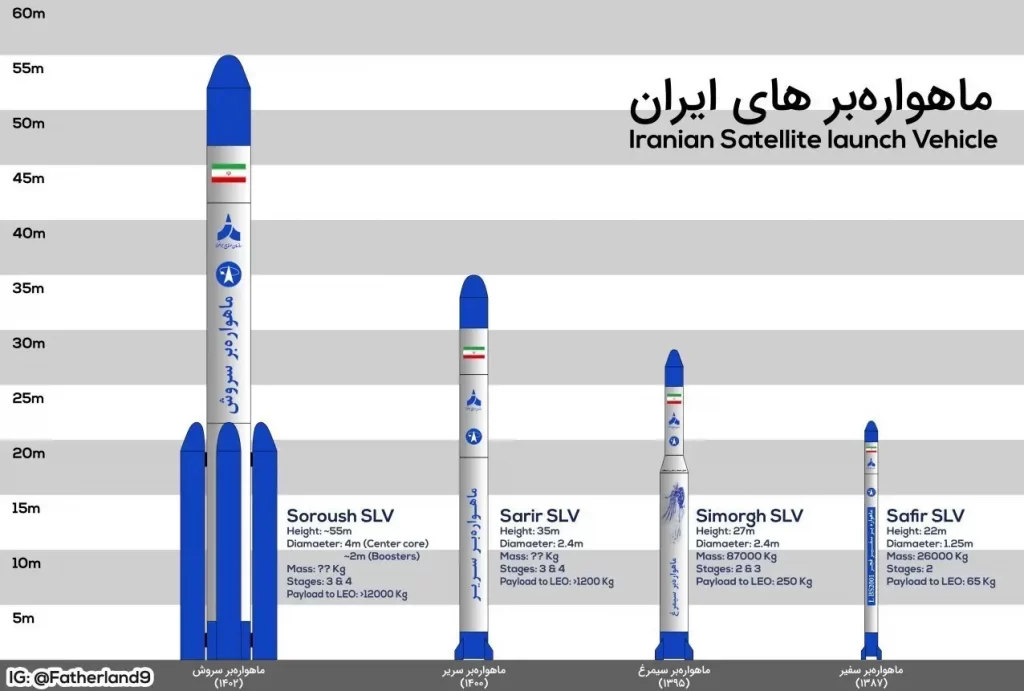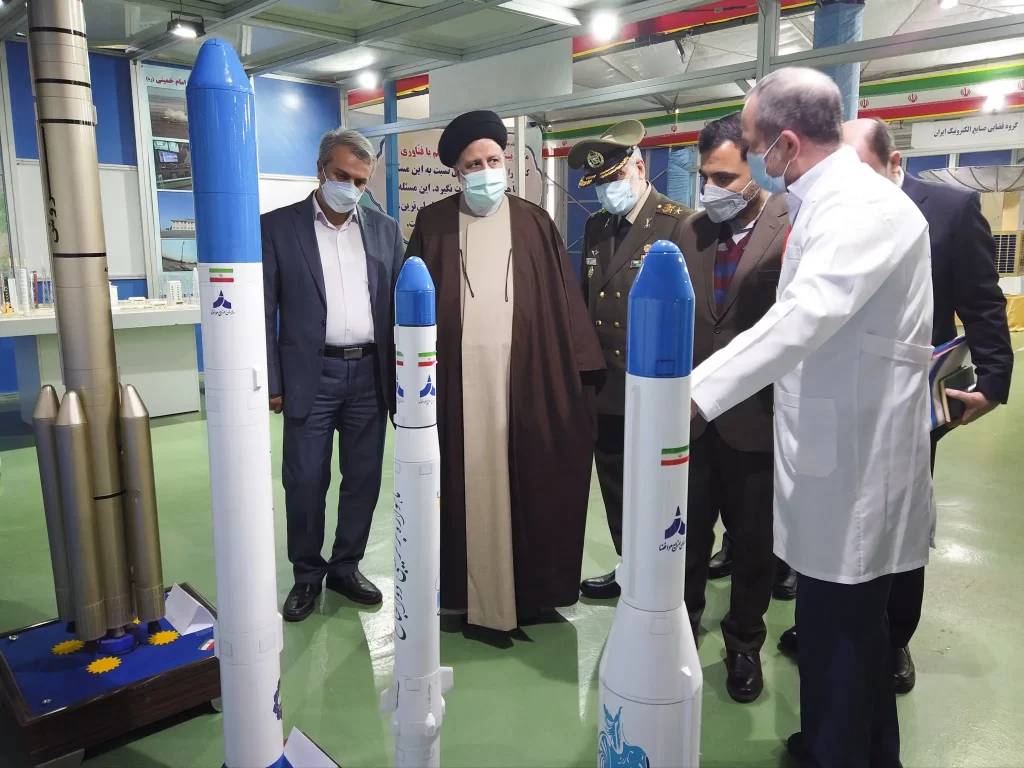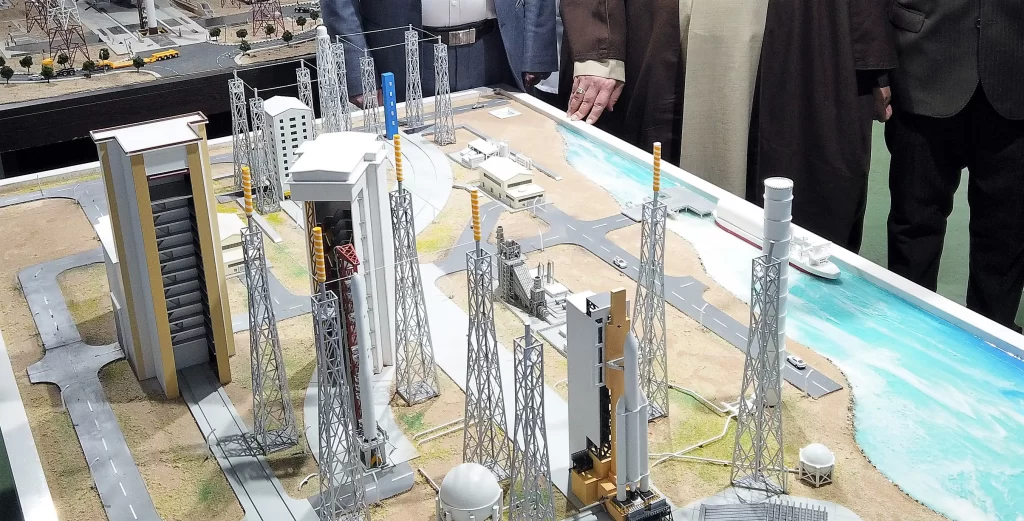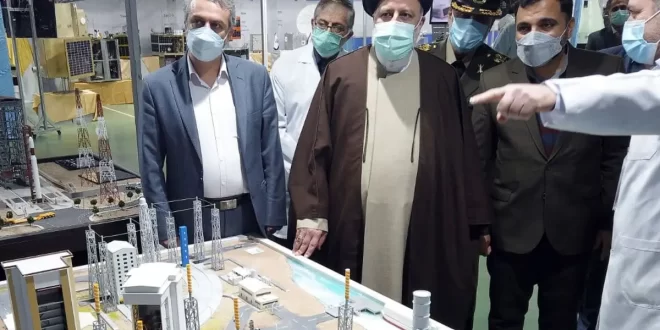Iran asserts that its space program is geared towards fostering scientific advancement, yet it undeniably bolsters its regional influence, and could enhance its hard power capabilities.
Space is viewed as the paramount strategic vantage point, stemming from Iran’s missile program, whose advancement holds significant geopolitical implications. The inclusion of military satellites in the space program, overseen by the IRGC, underscores Iran’s fusion of civilian and military initiatives in space endeavors, mirroring its broader strategic objectives.
Iran uses the Safir and Simorgh launchers and intends to improve its satellite and rocket technology. The funding of the space agency has increased, and extra technical help is provided through partnerships with nations like North Korea, China, and Russia.
Though the Iranian Space Agency is a division of the Ministry of Communication and Information Technology, the Iranian Ministry of Defense, especially through the IRGC, has significant control over the space program. The importance of the program to Iran’s military, security, and economic interests is highlighted by this dual supervision.

A noteworthy achievement is the building of the Chabahar Space Center in southeast Iran, which is slated to grow to be the biggest space launch location in West Asia. Its completion sometime in the next decade would further solidify Iran’s position as a major actor in regional space operations and is anticipated to improve Iran’s space capabilities and promote international collaboration.
Iran’s space program is poised for a significant advancement with the establishment of the Chabahar Space Center, strategically located in a southern-most region. This center’s proximity to the equator offers a key advantage, providing more speed by harnessing the Earth’s rotational speed, which enhances spacecraft lift-off and reduces fuel consumption. Designed to propel Iran’s space aspirations, the facility aims to deploy satellites into both geosynchronous and low Earth orbits (LEO). Equipped with cutting-edge launch platforms, processing complexes, and assembly facilities, the Chabahar Space Center represents Iran’s ambitious endeavor to overcome geographical limitations and bolster its space capabilities. Expected to surpass existing facilities like the Imam Khomeini Space Center, this new center marks a significant leap forward in Iran’s space infrastructure.
Iran ten-year space program
The Iranian Space Agency began its massive ten-year space program in January 2023 with the goal of making Iran a space technology development and launch services leader in the coming years. The program highlights Iran’s will to support its space industry by building launch pads, developing satellite infrastructure, and conducting research missions.
With its expansive 14,000 hectares, the Chabahar Space Center is ideally positioned to become the focal point of Iran’s space activities. Its advantageous position and special qualities allow for the launching of several kinds of satellites, including as sun-synchronous and low-orbit satellites. The facility is expected to play a crucial role in furthering Iran’s aspirations in space research and technology, enhancing its standing in the international space community, and bolstering its standing in the region as the main launch location for future missions.

The international community and Iran’s space program
Concerns over Iran’s space program have been raised by Western countries, especially by the US and European powers. The program’s possible dual-use character, which links it to the advancement of long-range missile technology, worries the United States. Similarly, believing that Iran’s space launch vehicles (SLVs) could serve as intercontinental ballistic missiles (ICBMs), the EU has voiced concerns about these vehicles. Concerns over Iran’s ambitions in space research, nuclear energy, and missile technology also surround its space program agreements with China and Russia.
The United States and its allies have accused Iran of using satellite activities as a cover for its intercontinental ballistic missile program, so endangering the Middle East and Europe, in violation of UN Security Council Resolution 2231. Nonetheless, Iran insists that the missiles it has built are not for carrying nuclear warheads and in line with Resolution 2231, which formalized the 2015 JCPOA nuclear agreement.
Challenges
Iran’s space program faces a wide range of technical, geopolitical, and economic challenges.
Dual-Use Nature: There have been questions over the Iranian space program’s possible dual-use nature due to the similarities in technology between intercontinental ballistic missiles and satellite launchers. Technological developments in satellite launchers can also be advantageous for the development of ICBMs, resulting in tensions and international attention.
International Concerns: Iran’s space program has sparked worries abroad, especially considering the possible military uses of its scientific developments. These worries have been exacerbated by the deployment of military satellites and the advancement of rockets manufactured domestically.
Technological Restrictions: Iran’s space program has made progress, although there are still technological limitations. There have been unsuccessful efforts to launch satellites, demonstrating that there are still difficulties in developing dependable and regular space launch capabilities. To address worries about proliferation, the international community has slapped sanctions on organizations connected to Iran’s space program. Iran also faces serious financial difficulties as US oil export and banking sanctions reduce its main source of income from crude exports.

Conclusion
Iran’s space program may evolve significantly with the Chabahar Space Center, mainly because of its advantageous location and planned state-of-the-art facilities. Because of its closeness to the equator, it can launch satellites more effectively, using less fuel and improving overall performance. This benefit, together with more advanced facilities than the Imam Khomeini Space Center, will enhance the center’s significance in furthering Iran’s space goals.
Iran’s determination to launch satellites from its territory, demonstrated by the establishment of the Chabahar space port, is met with regional and international opposition due to possible dual-use technology and Western uneasiness with Iran’s alliances with China and Russia. Iran claims to be conducting a purely scientific program, but questions regarding potential military uses of the program remain, which might affect how the space program develops in the future.





